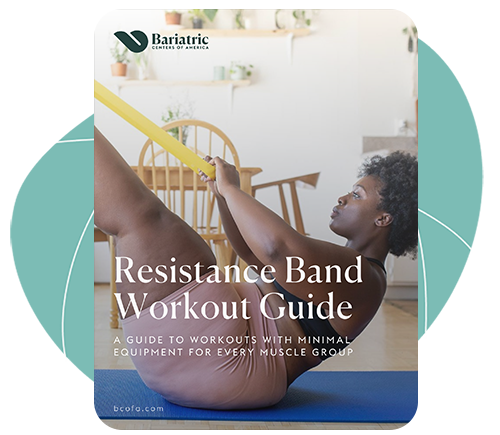
Do you want to reduce body fat, increase lean muscle mass, and burn calories more efficiently? Strength training, here we come! There are many post bariatric surgery tips, and one that is extremely important is adding strength and resistance training to your weekly routine. As a bariatric patient, lean muscle mass quickly diminishes the more you lose. You’re not only losing fat, but you’re also losing muscle. It is vital that strength training become a part of your exercise regimen. And no ladies, you won’t get bulky as you do not have enough testosterone.
According to federal researchers, only 6 percent of adults do the recommended minimum amount of at least two muscle-strengthening workouts each week.
The very first post bariatric surgery tip for getting strong is to train consistently. If you don’t train at some level of frequency and regularity, not only will you not progress, but you can also lose the strength you have already gained. Consistency means building a habit and routine of lifting weights. A fundamental rule to understand about building muscle is that your muscles will not grow unless you give them a good reason to. As the saying goes, “no pain, no gain.” Regardless of what exercises you do, what equipment you use, or what routine you have, you must push your muscles to the point of exhaustion.
Components of a Strength Workout Routine
1. Frequency:
Training a muscle group twice per week seems to be better than once a week for hypertrophy. The definition of hypertrophy is, “the enlargement of an organ or tissue from the increase in size of its cells.” You’ll want to train your biceps, triceps, shoulders, back, chest, and legs 2x per week for maximum growth.
2. Warm-Up:
One of the most important post bariatric surgery tip for exercising is to warmup. Before engaging in weight lifting, warm up with a brisk walk or aerobic activity for 5 to 10 minutes. Cold muscles are more prone to injury than are warm muscles. Focus on drills that will prepare your body for the exercises you plan to perform in that workout. For example, if you are about to squat, hop on the recumbent bike to get your leg muscles loosened.
3. Core Training:
Core exercises train the muscles in your pelvis, lower back, hips, and abdomen to work together. Focusing on training the core leads to better balance and stability, making daily activities such as walking, running, and sitting much more comfortable. Training your core will also alleviate back pain and enhance your posture
4. Technique:
It’s essential to use the proper technique in strength training to avoid injuries. If you’re new to weight training, work with a trainer or other fitness specialist to learn the correct form and technique. And, remember to breathe as you strength train. You would be surprised that something we do every day can be forgotten in moments of exertion.
5. Progression:
Choose a weight or resistance level heavy enough to tire your muscles after about 12 to 15 repetitions. When you can easily do more repetitions of a particular exercise, gradually increase the weight or resistance. This progressive post bariatric surgery tip will keep you feeling and looking stronger after each sweat session.
6. Compound Exercises:
Compound exercises are the most “bang for your buck” when it comes to lifting weights. Compound exercises require more than one muscle group working together to complete the movement. This replicates the way your body naturally moves. These exercises include squat and deadlift variations, lunge variations, and horizontal and vertical pulling and pressing for the upper body.
7. R and R:
Rest and recovery after exercise are an essential post bariatric surgery tip to muscle and tissue repair and strength building. This is even more critical after a heavyweight training session. A muscle needs anywhere from 24 to 48 hours to repair and rebuild, and working it again too soon leads to tissue breakdown instead of building.
8. Variety:
Getting out of your comfort zone in the gym is a great way to develop some new skills and give your body the stimulus it needs to make new gains. Being a quick adapting machine, our body starts to know exactly what you’re throwing at it and actually becomes more efficient, expending less energy to do the same task. Decrease the number of sets while increasing weight, decrease the rest between exercises, change the resistance (barbell, dumbbell, medicine ball, resistance bands, body weight) or try different exercises for the specific muscle group. Just add variety into your routine.













